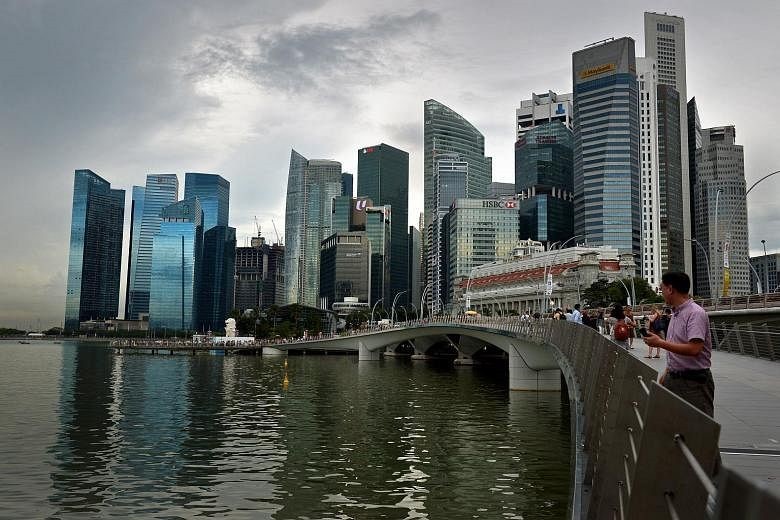
Image credit: The Straits Times
SINGAPORE: A rebound in the fortunes of small and medium enterprises (SMEs) helped the economy to grow by the fastest pace in one and a half years, notes a quarterly survey.
OCBC Bank polled about 800 business owners and used the data to predict the pace of economic growth for the second quarter to be around 3% – surpassing economists’ gross domestic product (GDP) growth estimates.
The Monetary Authority of Singapore survey of professional forecasters had synthesised a median consensus forecast in June that tipped growth of 2.7%.
Notably, the OCBC SME Index posted its first – albeit marginal – expansion, at 50.2 points, after shrinking for the five previous quarters, according to the report out yesterday.
Similar to the purchasing managers’ index, any reading above 50 represents an expansion and anything below is a contraction.
At the same time, overall SME collections – or the inflows of cash – grew by 1.4% year on year in the three months to March 31, while payments – or outflows – dropped by 1.3%.
Seven of the 11 industries making up the index were in the black, with notable turnarounds by resources, transport and logistics, and wholesale trade, as well as healthcare – which was wavering between growth and contraction during that period.
Said OCBC head of global commercial banking Linus Goh: “There is clearly a shift, a significant and broad-based turnaround after six quarters of contraction by industries in the export-oriented sectors. They contributed to the overall improvement in the SME Index.”
By comparison, performance has been consistently positive for industries exposed to the domestic sector, he noted.
These industries, such as education, food and beverage and retail, had been keeping the economy somewhat on an even keel, “despite intense competition for manpower and rising cost pressures”, the report said.
The education sector extended its gains to reach 50.8 points, with double-digit collections of 16% and payments of 11.9%.
“Notably, early childhood and recreation classes were the joint primary drivers for the sector, even as training centres shrank.
Goh said: “This demand for education, especially those at the top of consumers’ hierarchy of needs, tends to be rather sticky.”
The index is likely to remain relatively flat and range-bound for the rest of 2024.
“While underpinned by positive drivers, such as the global recovery in electronics that bodes well for manufacturing and wholesale trade, there are also downside risks, said Goh.
He noted that the big known uncertainties include supply chain disruptions, cost pressures and geopolitics.
“Each of these has the potential to significantly affect final demand,” he added.
For example, geopolitical tensions could derail disinflationary momentum, which, in turn, would hamper domestic demand.
However, Goh is hopeful that there was sufficient impetus in the domestic sector to compensate for these challenges.
Among the other positive developments that could counterbalance these risks include a more stable China and the impact of visa-free travel between it and other countries in the region, while intra-regional trade between South-East Asian markets should remain healthy and resilient.
Goh also felt that SMEs can cope with the perennial bugbears of wages, employment and inflation that cut across all the sectors.
“It comes with the territory,” he said, adding that “in the absence of negative drivers, they should have a good second half”.
Source: https://www.thestar.com.my/business/business-news/2024/07/12/sme-broad-turnaround-paves-way-for-gdp-growth

